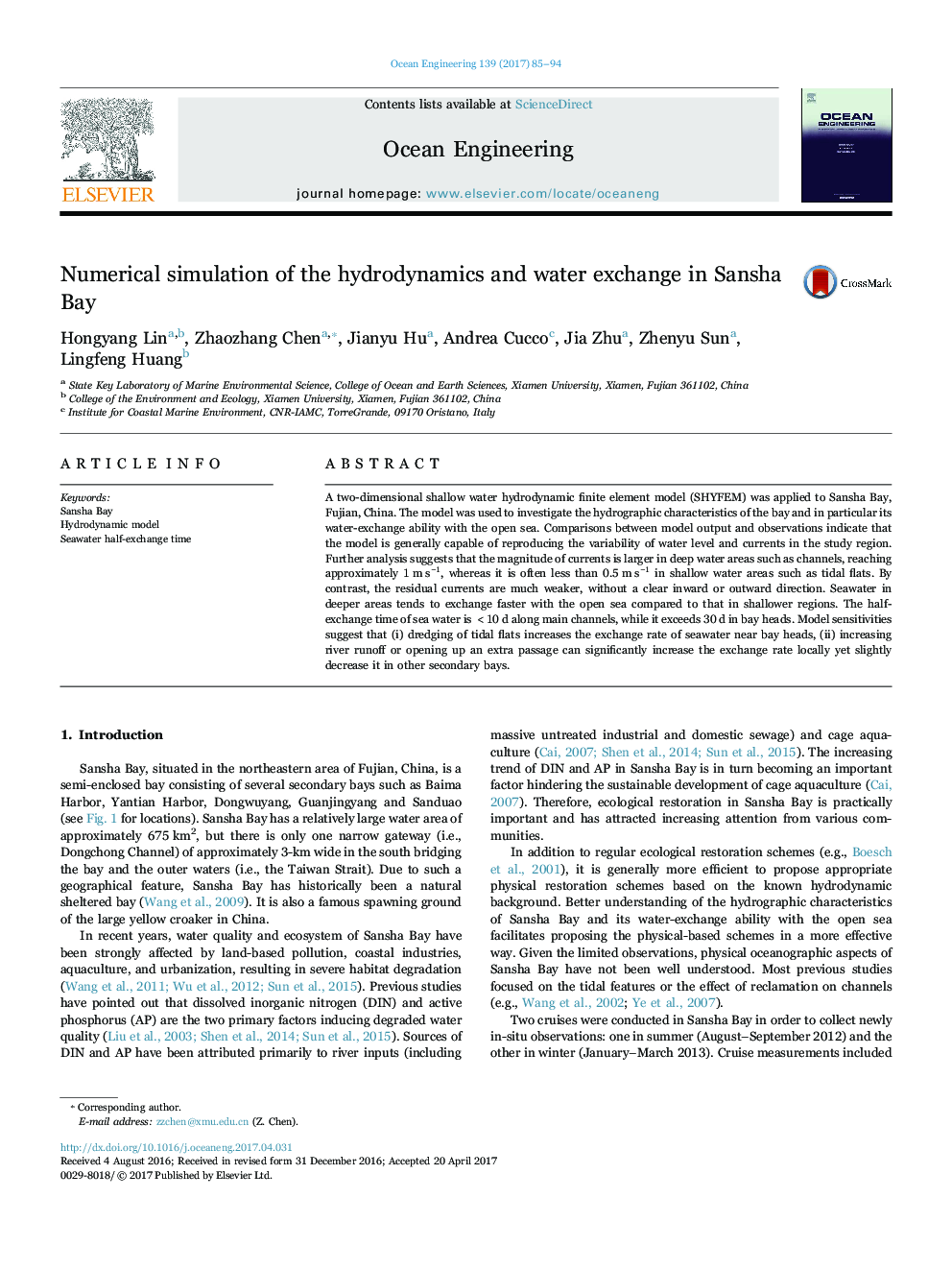| Article ID | Journal | Published Year | Pages | File Type |
|---|---|---|---|---|
| 5474279 | Ocean Engineering | 2017 | 10 Pages |
Abstract
A two-dimensional shallow water hydrodynamic finite element model (SHYFEM) was applied to Sansha Bay, Fujian, China. The model was used to investigate the hydrographic characteristics of the bay and in particular its water-exchange ability with the open sea. Comparisons between model output and observations indicate that the model is generally capable of reproducing the variability of water level and currents in the study region. Further analysis suggests that the magnitude of currents is larger in deep water areas such as channels, reaching approximately 1 m sâ1, whereas it is often less than 0.5 m sâ1 in shallow water areas such as tidal flats. By contrast, the residual currents are much weaker, without a clear inward or outward direction. Seawater in deeper areas tends to exchange faster with the open sea compared to that in shallower regions. The half-exchange time of sea water is <10 d along main channels, while it exceeds 30 d in bay heads. Model sensitivities suggest that (i) dredging of tidal flats increases the exchange rate of seawater near bay heads, (ii) increasing river runoff or opening up an extra passage can significantly increase the exchange rate locally yet slightly decrease it in other secondary bays.
Keywords
Related Topics
Physical Sciences and Engineering
Engineering
Ocean Engineering
Authors
Hongyang Lin, Zhaozhang Chen, Jianyu Hu, Andrea Cucco, Jia Zhu, Zhenyu Sun, Lingfeng Huang,
